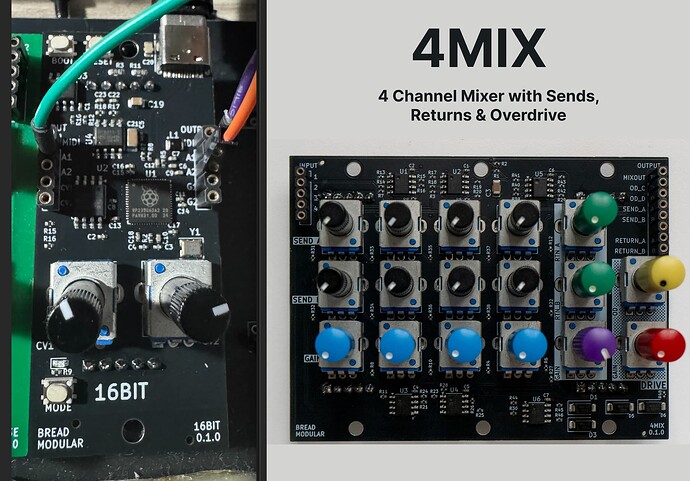Just stumbled upon this - similar form factor and $, launched abt a month ago. Not nearly as many modules as microrack, still needs lots of development, etc. I’m calling it “tangentially related”, perhaps we are (finally) seeing the beginnings of a micro-revolution of affordable modular formats. Maybe some of you will find it interesting…
Converter module?
Thanks @SKYNET_23 for mentioning this. I found this via the analytics.
Yeah! I think mini/micro modules have a place among big eurorack modules.
When we started, we didn’t know about MikroRack & I had some time playing with AE Modular.
We open-sourced everything from very early days & we want people to use those rather than buying from the store.
(I personally have very little interest to build-modules to sell, but I want to design & play with those)
These days we are working with Raspberry Pi Pico2 based (custom design) module for effects & complex oscillators. It will work nicely with recently released mixer with sends & returns.
I don’t think we need any special converters. We are also 5v tolerant by design. All you need is to connect the grounds of both Bread Modular & MikroRack with a wire.
I’m not sure about using directly on the bread boards as we get 3.3v from top(+) and GND from bottom(+).
I suppose mikrorack uses a single rail to get the power.
A few things I noticed:
- Power Supply: Microrack still uses the classic three voltages, like Eurorack, while Bread Modular only has 3.3V. So, if I want to design a module for Bread Modular I have to ditch the old LM324 and use something from this century instead. Which is not bad, just uncomfortable.
 But some analog circuits are very difficult or just impossible with such a low supply voltage, e.g. noise generation from a reverse-biased diode. That leads to digital replacements, which, again, ist not bad, simply different.
But some analog circuits are very difficult or just impossible with such a low supply voltage, e.g. noise generation from a reverse-biased diode. That leads to digital replacements, which, again, ist not bad, simply different. - The lower signal voltage of Bread Modular might be a concern, it means lower S/N ratio, at least for noise from the outside (induction into wire loops).
- The impedances are higher in the Bread Modular standard. That suggests to me lower currents overall and also lower current drawn from the power supply, which makes it more suitable for battery power / mobile use.
- Bread Modular modules seem to be generally simpler than those from Microrack. The circuits with vactrols are easier to understand, at the cost of giving up some control and precision. And there are some details (e.g. LEDs in parallel) that make me uncomfortable, but we can’t really compare on that level yet, while the Microrack circuit diagrams are not published.
(disclaimer: I backed Microrack on Kickstarter, so I am biased: my subconscious will prevent me from coming to the conclusion that I was a fool and could have the same fun elsewhere, cheaper)
